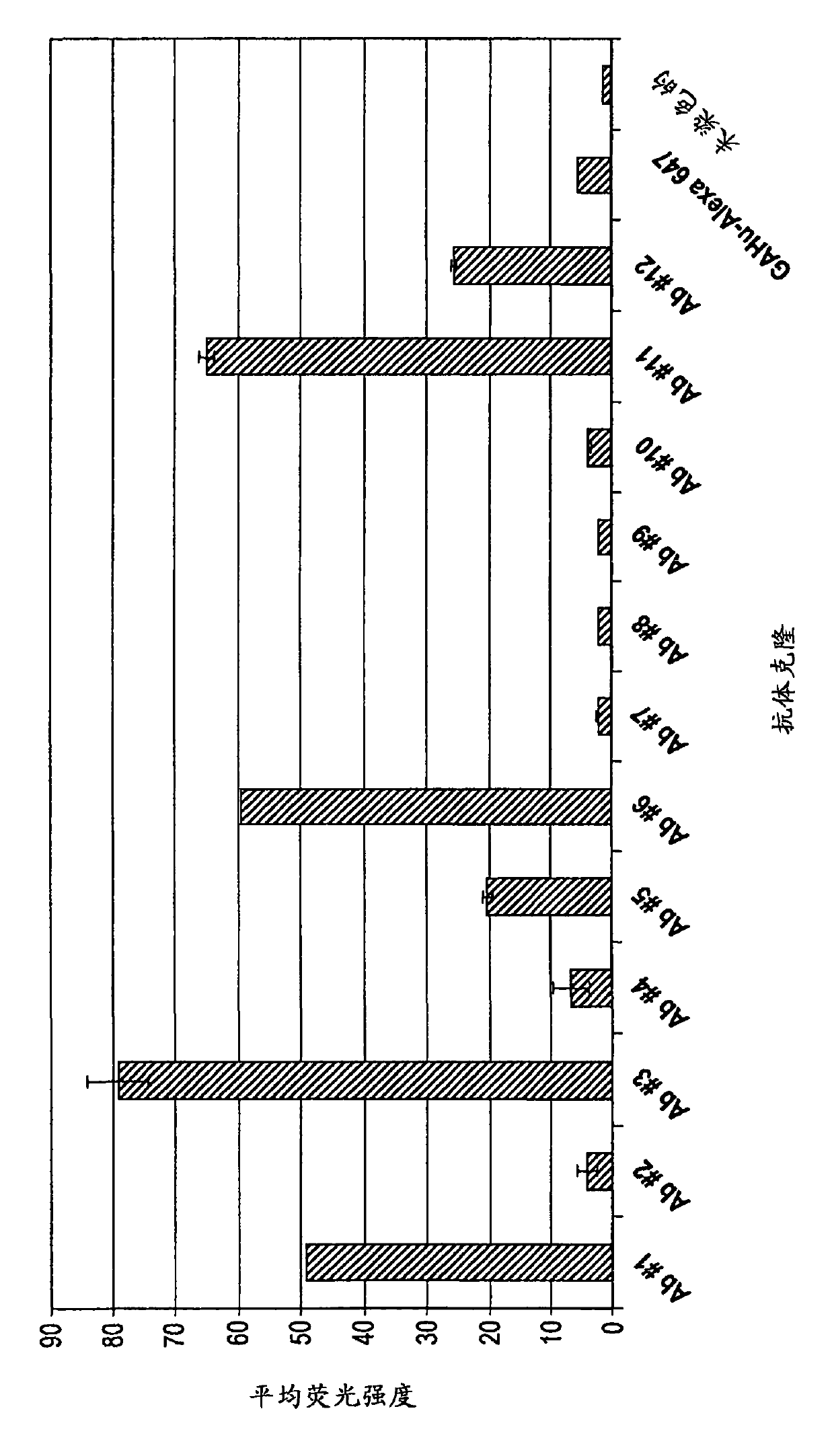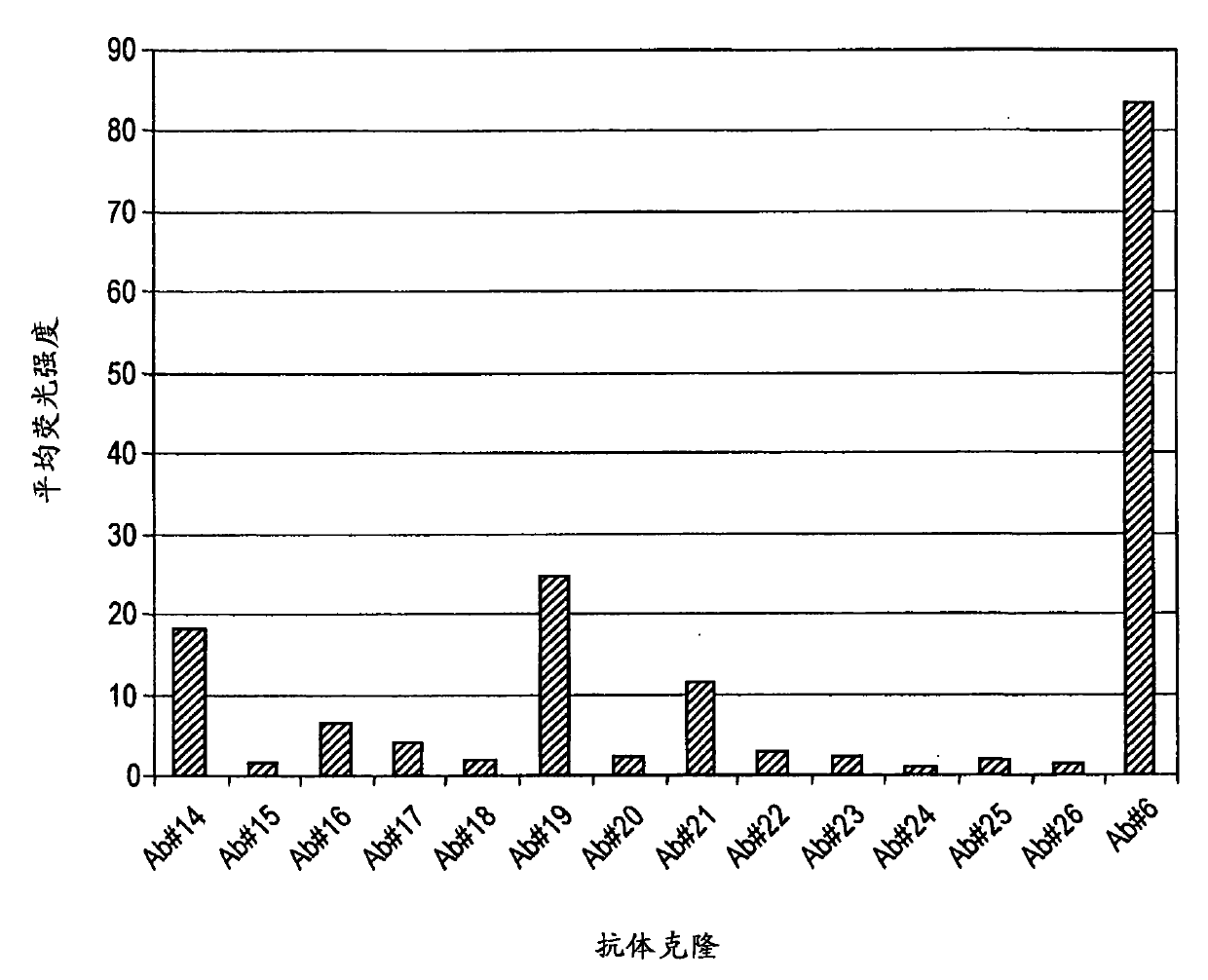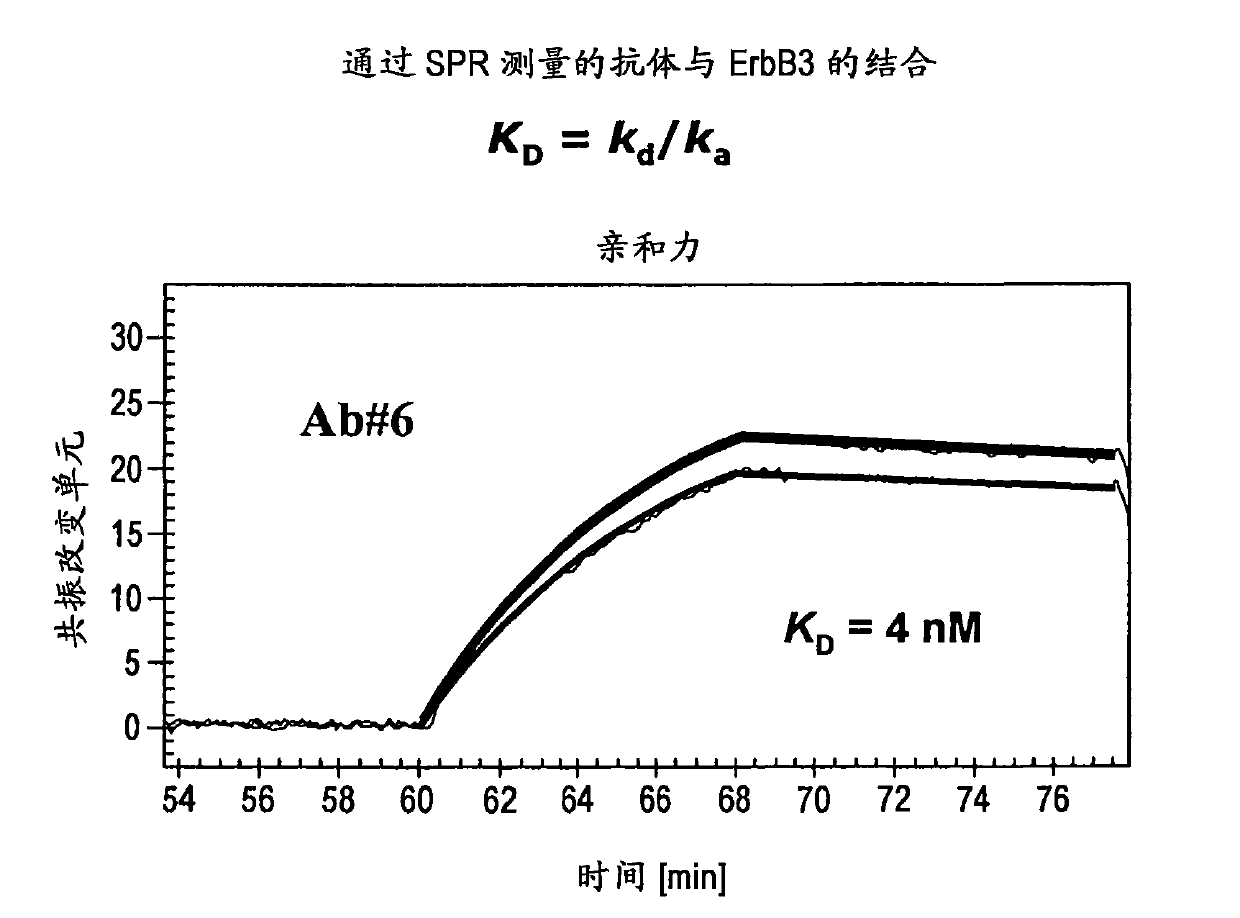Antibodies against erbb3 and uses thereof
A technology of antibodies and monoclonal antibodies, applied in the fields of antibodies, antibody medical components, anti-tumor drugs, etc., can solve the problem that ErbB3 has not been paid attention to
- Summary
- Abstract
- Description
- Claims
- Application Information
AI Technical Summary
Problems solved by technology
Method used
Image
Examples
preparation example Construction
[0355]Sterile injection solutions are prepared by incorporating the active compound in the required amount and, as required, one or a combination of ingredients listed above in an appropriate solvent, followed by sterile microfiltration. Generally, dispersions are prepared by incorporating the active compound into a sterile vehicle which contains a basic dispersion medium and the required other ingredients from those enumerated above. In the case of sterile powders for the preparation of sterile injectable solutions, the preferred methods of preparation are vacuum drying and freeze-drying (lyophilization), which yield a powder of the active ingredient plus any desired additional ingredients from a previously sterile-filtered solution thereof. .
[0356] Dosage regimens are adjusted to provide the optimum response (eg, a therapeutic response) desired. For example, a single bolus may be administered, several divided doses may be administered at different times or the administer...
Embodiment 1
[0399] Example 1: Preparation of Antibodies Using Phage Display
[0400] To obtain human anti-ErbB3 antibodies referred to herein as Ab#6, Ab#3, Ab#14, Ab#17 and Ab#19, human Fab phage libraries comprising unique combinations of immunoglobulin sequences from human donors (Hoet et al., supra, the entire contents of which are incorporated herein by reference) performed an initial screen for ErbB3 binders.
[0401] Using purified ErbB3 and a Chinese hamster ovary cell line expressing cell surface ErbB3, 73 unique Fab sequences were identified from the library. These 73 clones were then reformatted into phage-free Fabs only. Using high-throughput methods, these Fabs were expressed on a small scale and tested for binding using ELISA and Flexchip methods, which are a high-throughput surface plasmon resonance (SPR) technique. The 73 Fabs without phage were spotted on the chip surface and the binding kinetics and epitope blocking to ErbB3-his fusion target protein or ErbB3-Fc prot...
Embodiment 2
[0403] Example 2: Optimization of Anti-ErbB3 Fab
[0404] Following the identification of Fabs that block the binding of the ErbB3 ligand (neuretonin) to ErbB3, the following codon optimization was performed on the VH and VL sequences of the Fabs.
[0405] Specifically, expression constructs expressed as IgGl or IgG2 isotypes were used to rearrange the VH and VL regions. This construct includes a Selexis backbone with expression cassettes for replacement of the appropriate heavy and light chain sequences. Selexis vectors contain the CMV promoter and matching poly-A signal.
[0406] The VH and VL nucleic acid sequences of codon-optimized Ab#6 are shown in SEQ ID NO: 25 and 26, respectively, and these sequences of Ab#3 are shown in SEQ ID NO: 27 and 28, respectively, as shown in FIG. 22 .
PUM
 Login to View More
Login to View More Abstract
Description
Claims
Application Information
 Login to View More
Login to View More - Generate Ideas
- Intellectual Property
- Life Sciences
- Materials
- Tech Scout
- Unparalleled Data Quality
- Higher Quality Content
- 60% Fewer Hallucinations
Browse by: Latest US Patents, China's latest patents, Technical Efficacy Thesaurus, Application Domain, Technology Topic, Popular Technical Reports.
© 2025 PatSnap. All rights reserved.Legal|Privacy policy|Modern Slavery Act Transparency Statement|Sitemap|About US| Contact US: help@patsnap.com



